
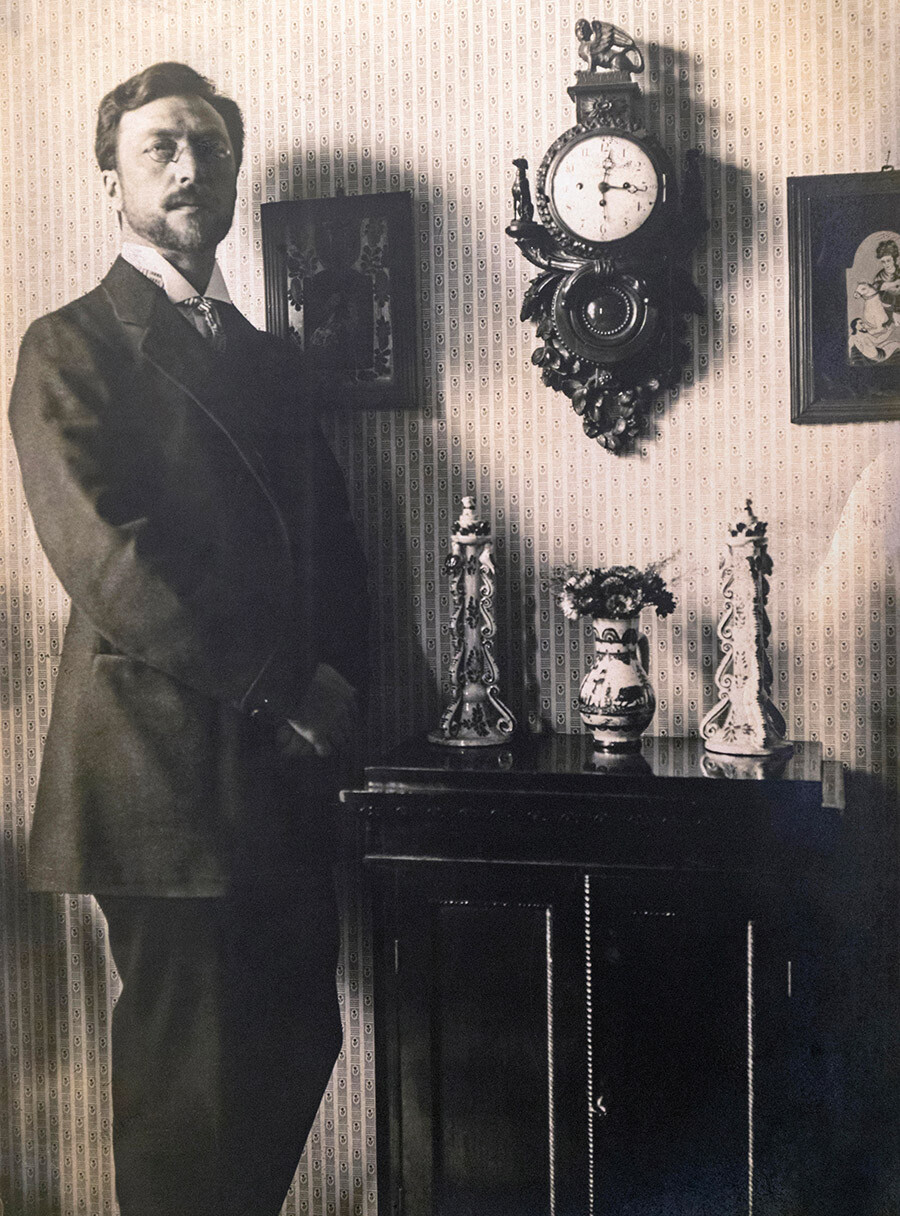
Wassily Kandinsky
Legion MediaBefore devoting himself completely to art, Kandinsky complied with his parents’ wishes and studied law at Moscow State University. He graduated in 1893 and taught law at the university for three years. He was then offered a position as a professor of law at the University of Dorpat in Tartu (in present-day Estonia). Kandinsky, who had just turned 30, decided instead to focus on painting.

Wassily Kandinsky, Impression III (Concert), 1911
Lenbachhaus gallery, MunichKandinsky believed that art was closely connected to music. He was inspired to give up his law career in part by a production of Wagner’s “Lohengrin” at the Bolshoi Theater. Kandinsky described the experience in his autobiography, Steps: “Violins, deep basses and especially the wind instruments represented for me the full force of the twilight hour; in my mind I saw all my colors, they were all there, in my mind’s eye. Wild, almost crazy lines, were being painted in front of me.” Music inspired him to create new works throughout his career. For example, after a concert by Arnold Schoenberg in Munich in 1911, he painted “Impression III (Concert)”.
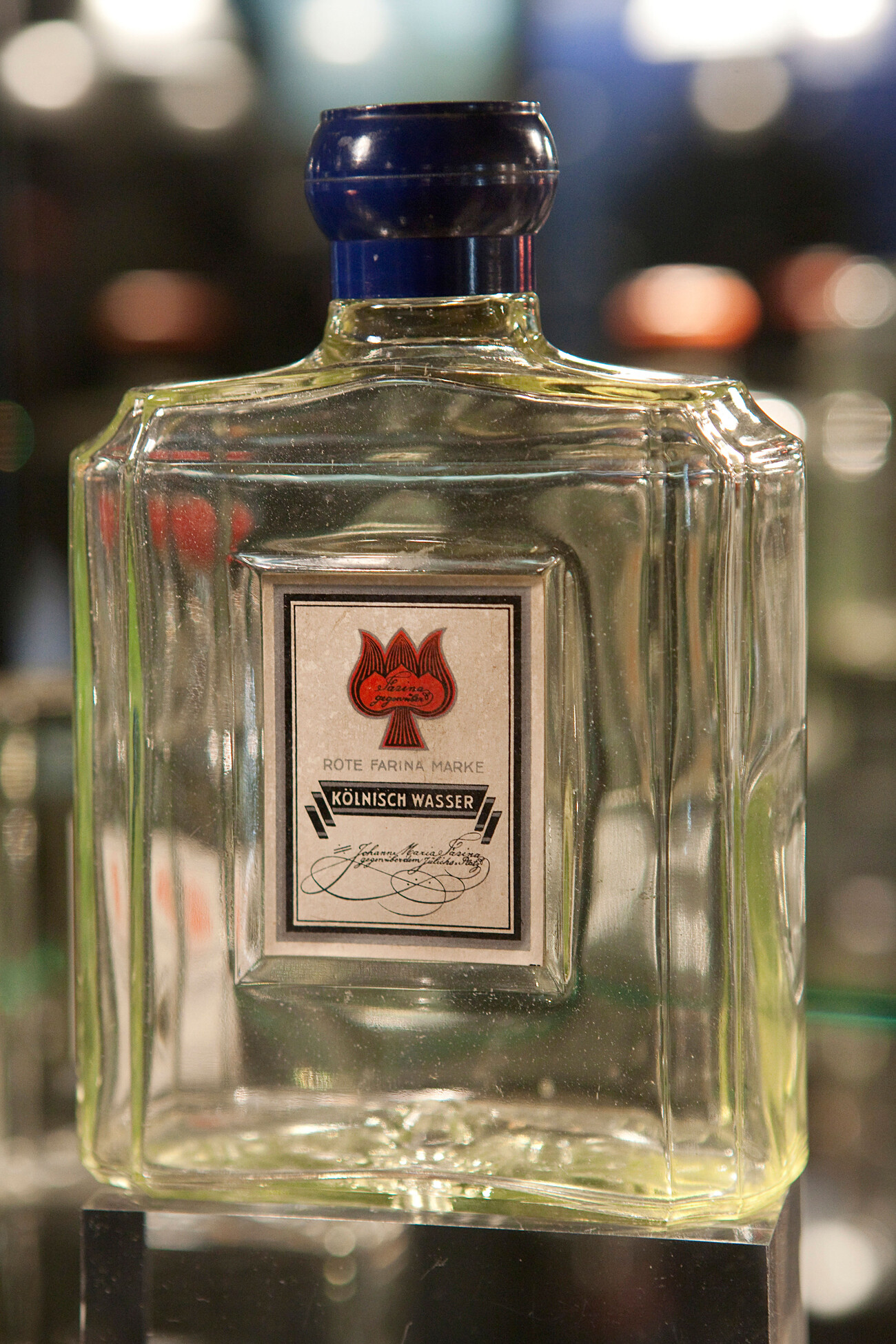
A fragance flacon designed by Wassily Kandinsky for the world exposition 1912
Legion MediaFinding synthesis between the arts was extremely important for Kandinsky, and he did not restrict himself to art and music. He designed interiors, clothes and furniture and created sketches for painting on porcelain. He also was interested in photography and cinematography.
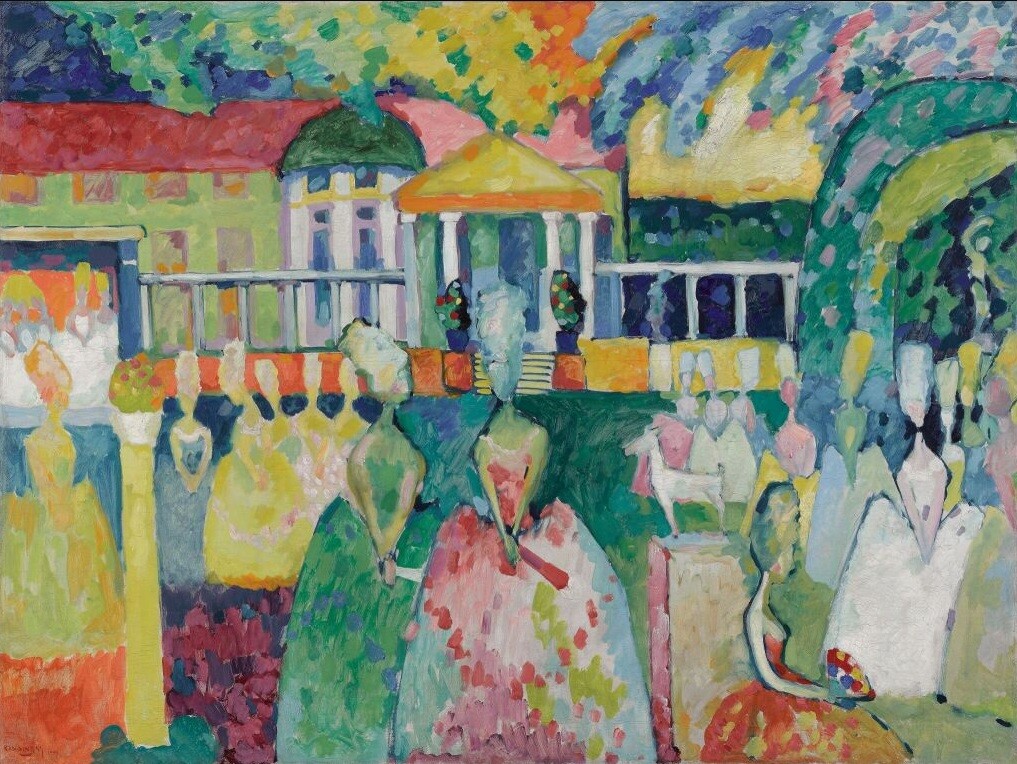
Wassily Kandinsky. Ladies in Crinolines, 1909
Tretyakov GalleryIn search of a new language of art, Kandinsky first tried different styles. In 1896, he was stunned by an exhibition of Monet’s “Haystacks” in Moscow. Later, while studying at the school of Anton Ažbe in Munich, Kandinsky tried using separate brushstrokes and pure colors. He felt close to art nouveau and symbolism. During this phase, he painted traditional country estate scenes, such as “Crinoline Lady”. Following his time in Europe, Kandinsky’s works showed elements of fauvism and of the Les Nabis movement.
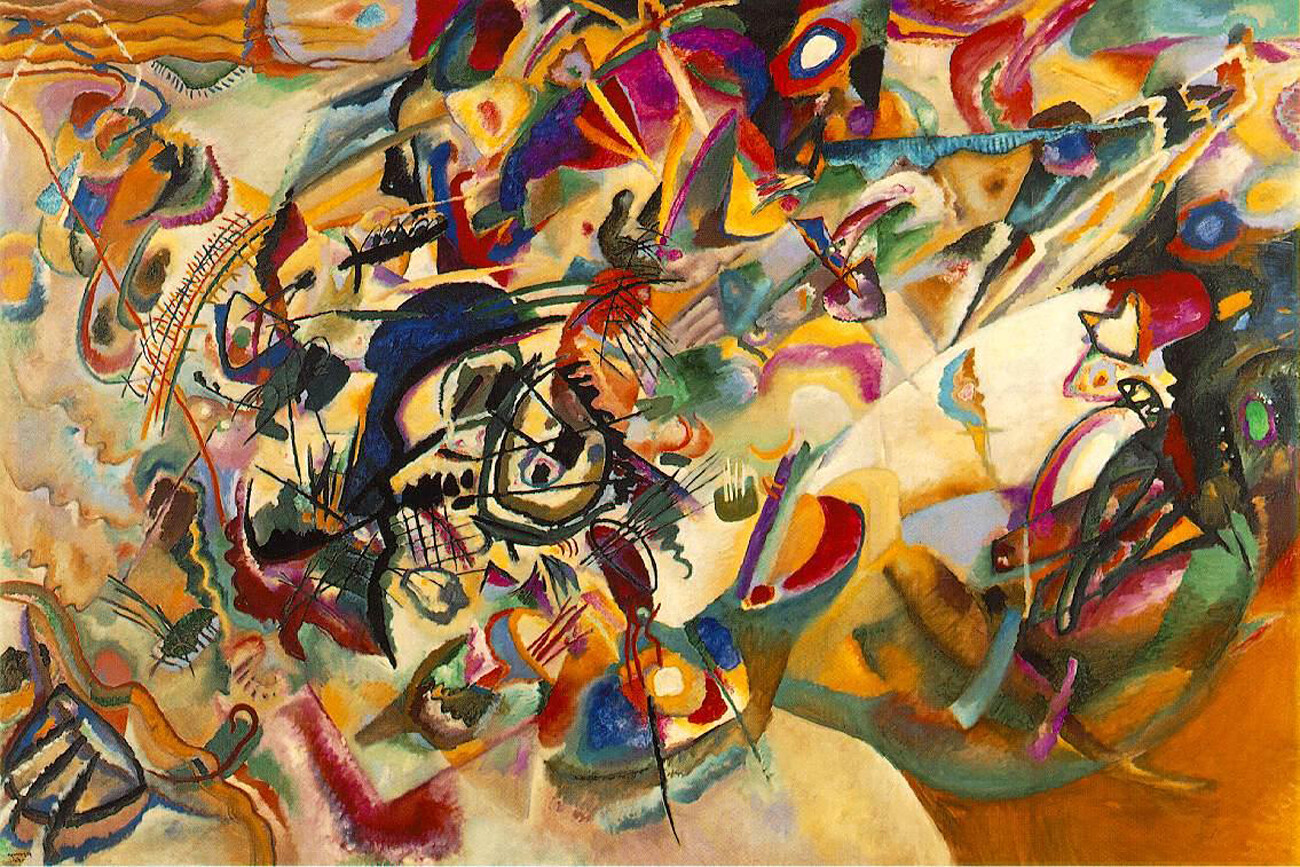
Wassily Kandinsky. Composition VII
Tretyakov GalleryKandinsky’s first abstract works were preceded by a gradual simplification and destruction of form, which he practiced not only in painting but also in xylography. At the second exhibition of the New Munich Artists’ Association in 1910, which included such artists as Picasso, Braque and van Dongen, Kandinsky presented his “Sketch for “Composition II” (Guggenheim Museum, New York). Critics greeted it with scathing comments, including writing that the work had been painted by a madman or somebody “under the influence of morphine or hashish.”

Wassily Kandinsky. Picture with a Circle, 1911
AFP“Picture with a Circle” is considered the first abstract painting in Kandinsky’s career and the first abstract painting in the world. Created in 1911, it is currently on display at the National Museum of Georgia in Tbilisi. According to the artist, nature gives an impulse for creativity, but there is no point in copying it. Instead, color sets the main emotional tone of a work and helps create the composition, and form is a combination of planes and lines that create movement.
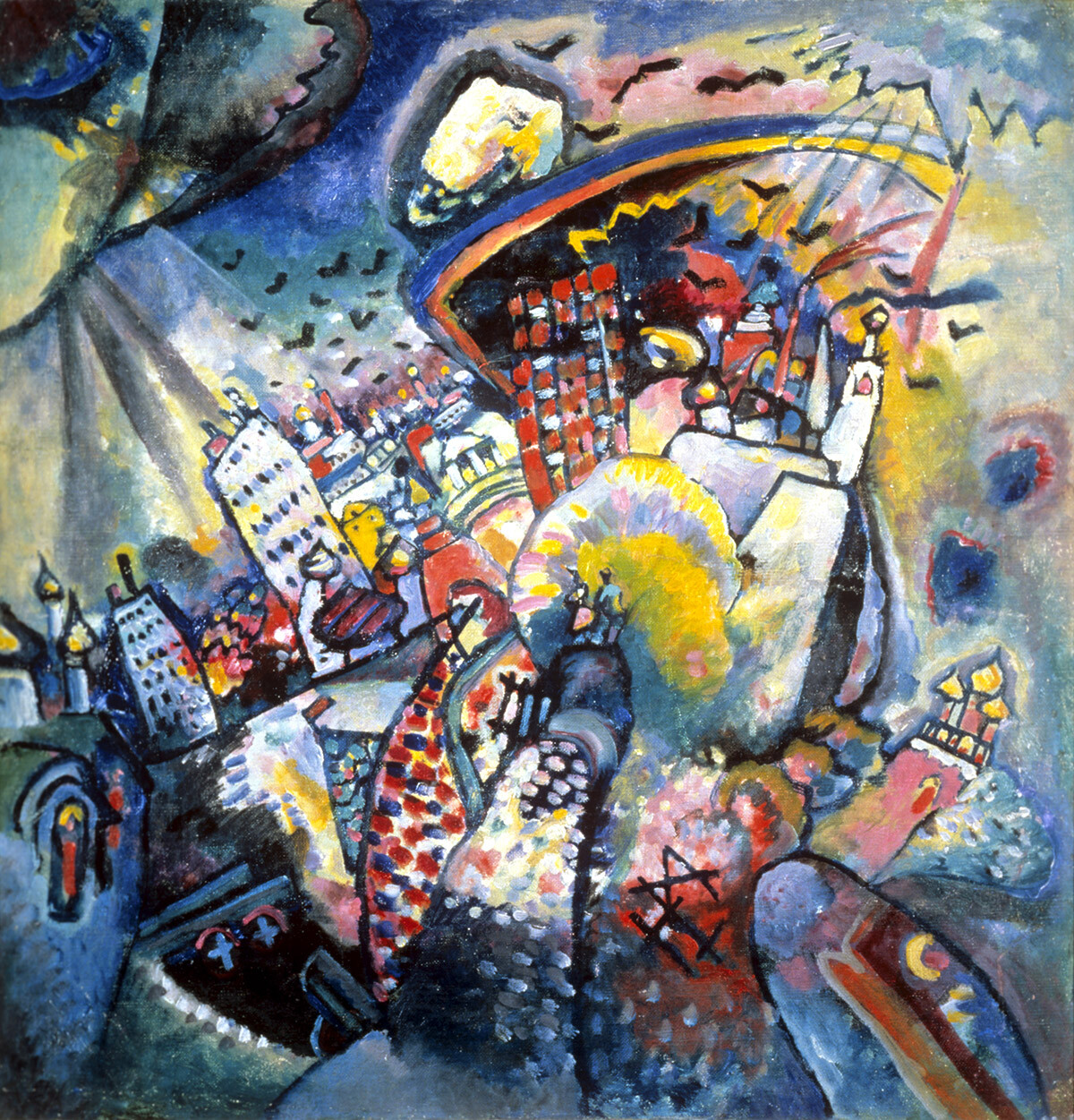
Wassily Kandinsky. Red Square, Moscow, 1916 (Reproduction)
SputnikBy giving up a subject matter in paintings, Kandinsky introduced a new classification of genres. In place of the previously used categories of portrait, landscape and still life, Kandinsky created “impressions” – works that retained a connection with nature; “improvisations” – spontaneous and often unconscious expressions of internal impressions and emotions; and “compositions” – a synthesis of an external form and an internal substance expressed with the help of lines and colors.
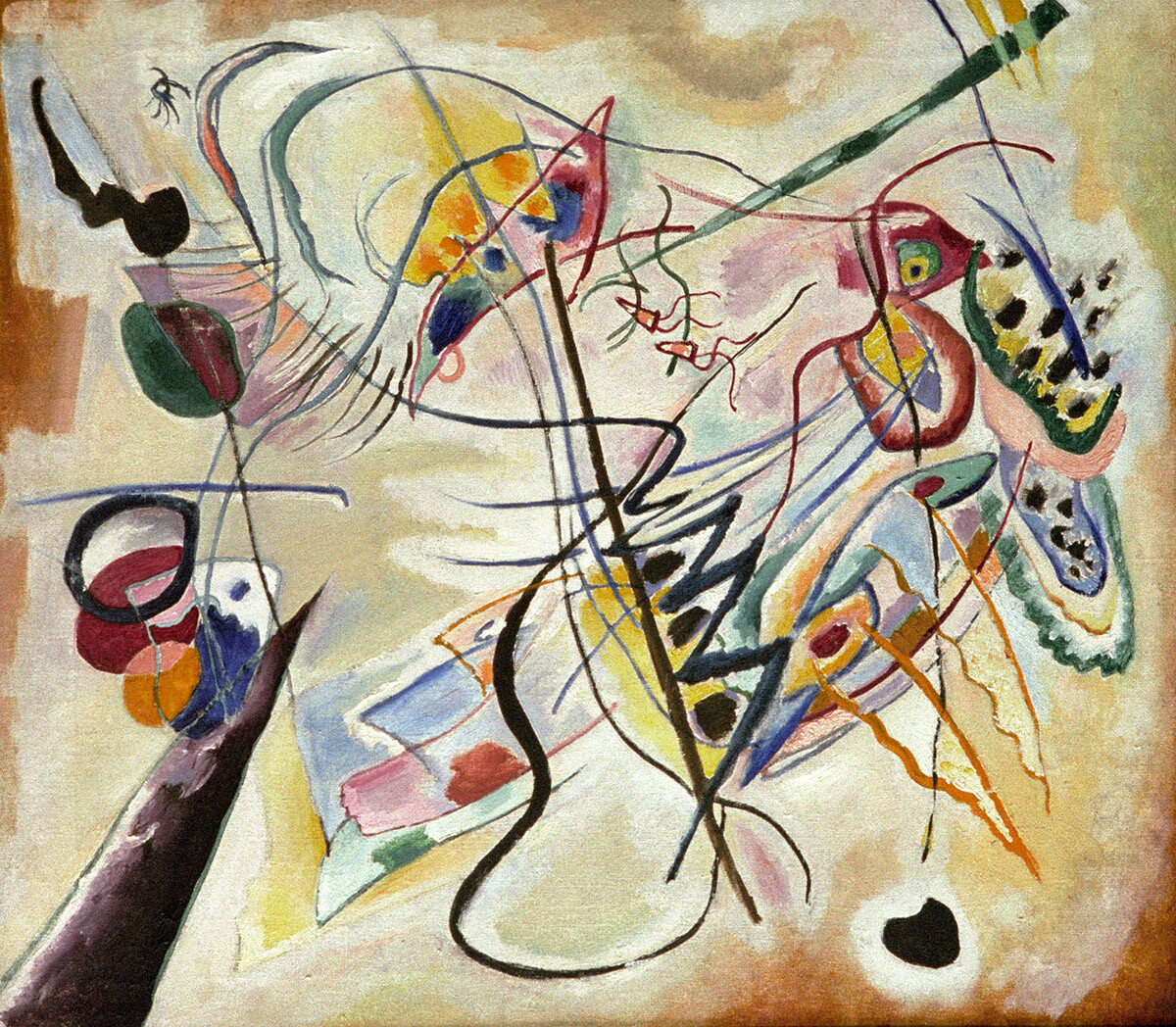
Wassily Kandinsky, Musical Overture. Purple wedge, 1919 (Reproduction)
Oleg Lastochkin/SputnikFor Kandinsky, colors had value in themselves not connected to the subject matter of a painting. He called his paints “animate creatures” and believed they had the power to get right to the soul of the beholder. Based on Goethe’s theories, Kandinsky came up with his own interconnections: yellow is reminiscent of the sound of the flute, is responsible for earthly things, highlights movement towards the viewer and corresponds to a triangle. The color blue, on the other hand, represents celestial tranquility, sadness, movement away from the viewer, a circle and the sound of the cello. Red embodies boiling inside and the form of a square; and green, immobility and a lack of emotion.
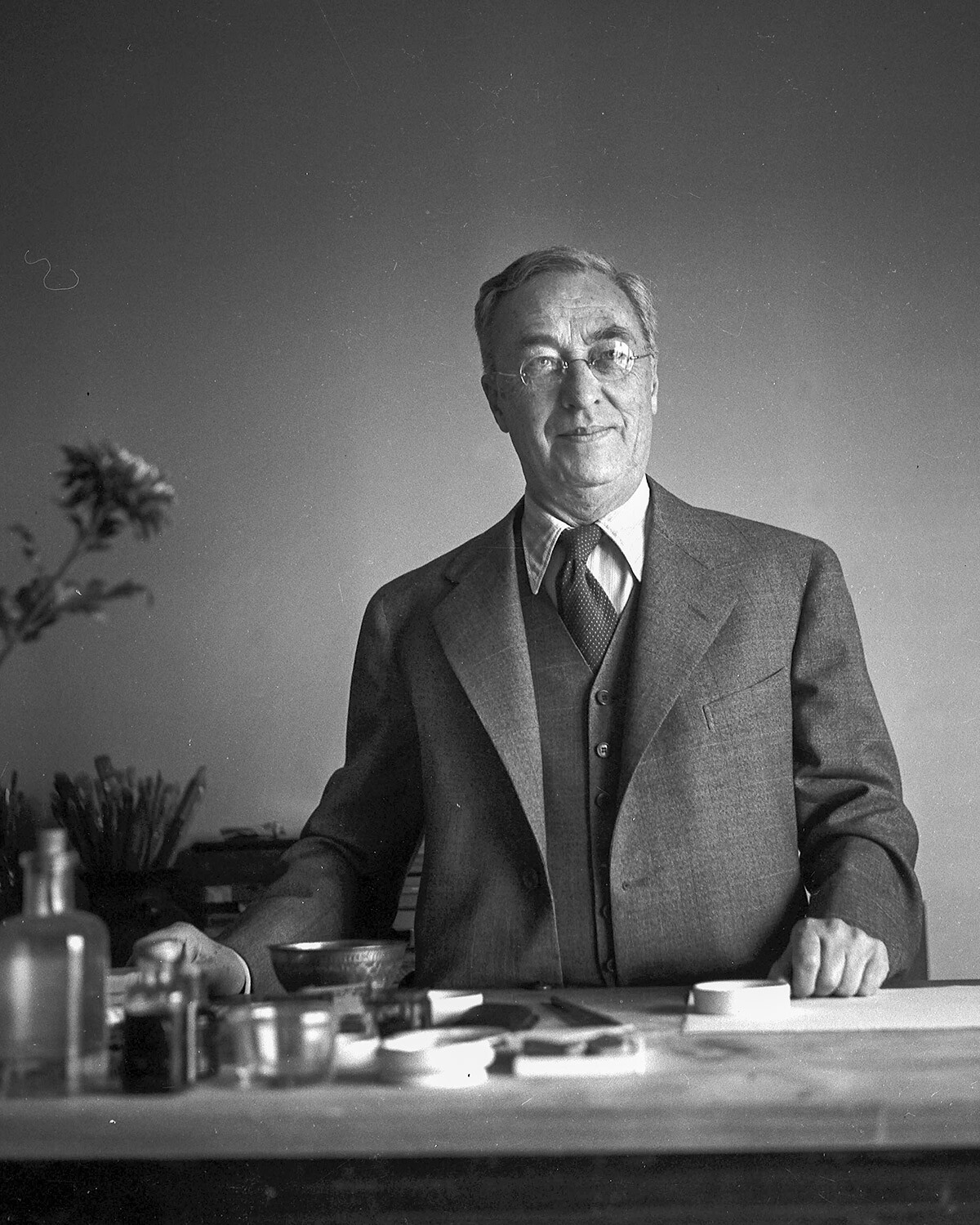
Wassily Kandinsky
Getty ImagesThe irrational and emotional nature of Kandinsky’s works ran counter to the rationalism of other Russian avant-garde artists. This disconnect became particularly clear after the revolution, when Kandinsky was teaching at newly established art institutes with Alexander Rodchenko, Varvara Stepanova and Lyubov Popova. Unable to realize his ideas in Russia, Kandinsky moved to the Bauhaus in Germany in 1922. There he taught analytical drawing and mural painting.
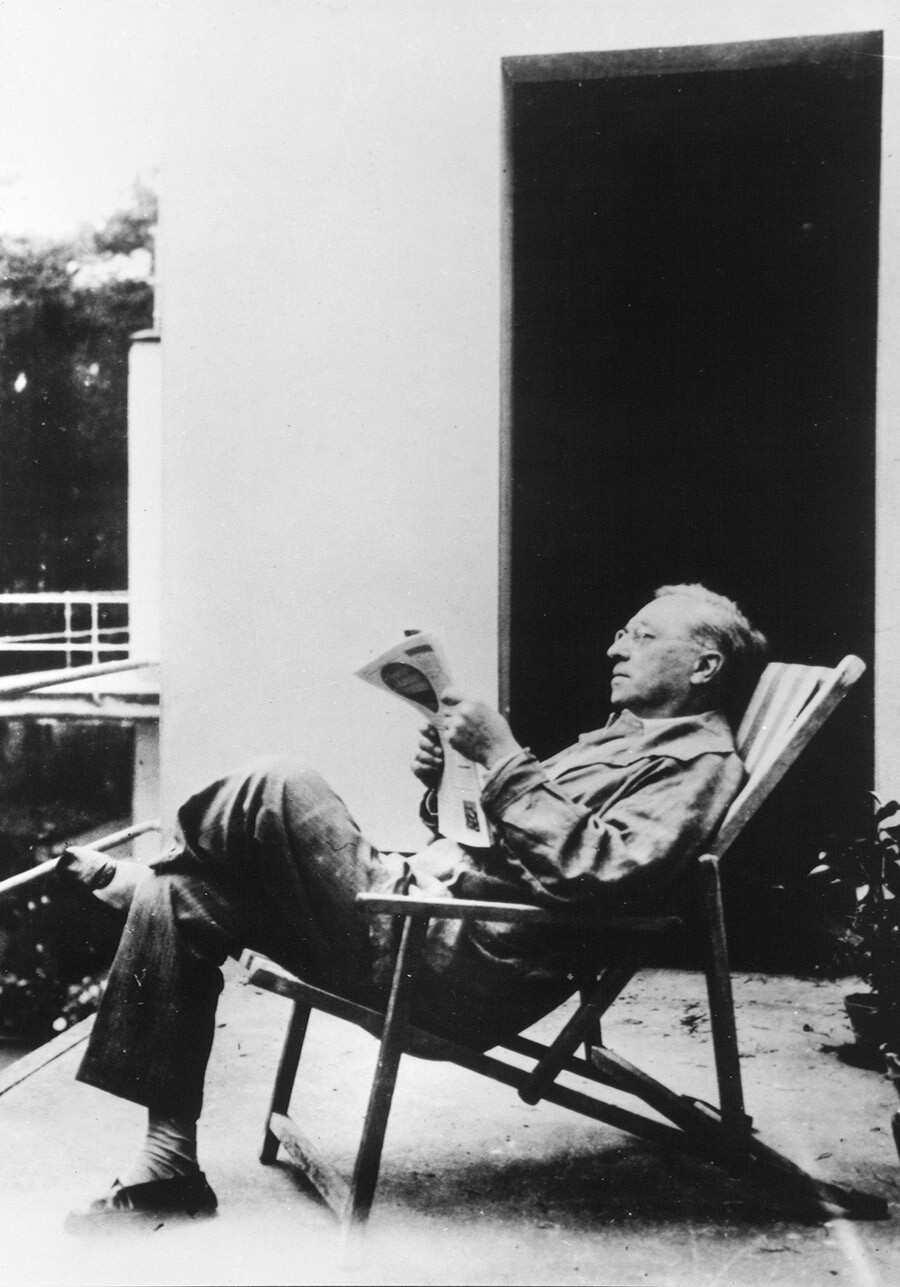
Wassily Kandinsky
DEA PICTURE LIBRARY/Getty ImagesWassily Kandinsky was a very prolific artist. Between 1909 and 1914, when he was developing abstraction, Kandinsky created some 200 paintings and numerous sketches. Many of them have been lost. In the Soviet Union, they were sent to provincial museums and hidden in storerooms since they did not conform to the spirit of socialist realism, the reigning art form of the time. In Nazi Germany, they were classified as degenerate art.
All rights reserved by Rossiyskaya Gazeta.
Subscribe
to our newsletter!
Get the week's best stories straight to your inbox